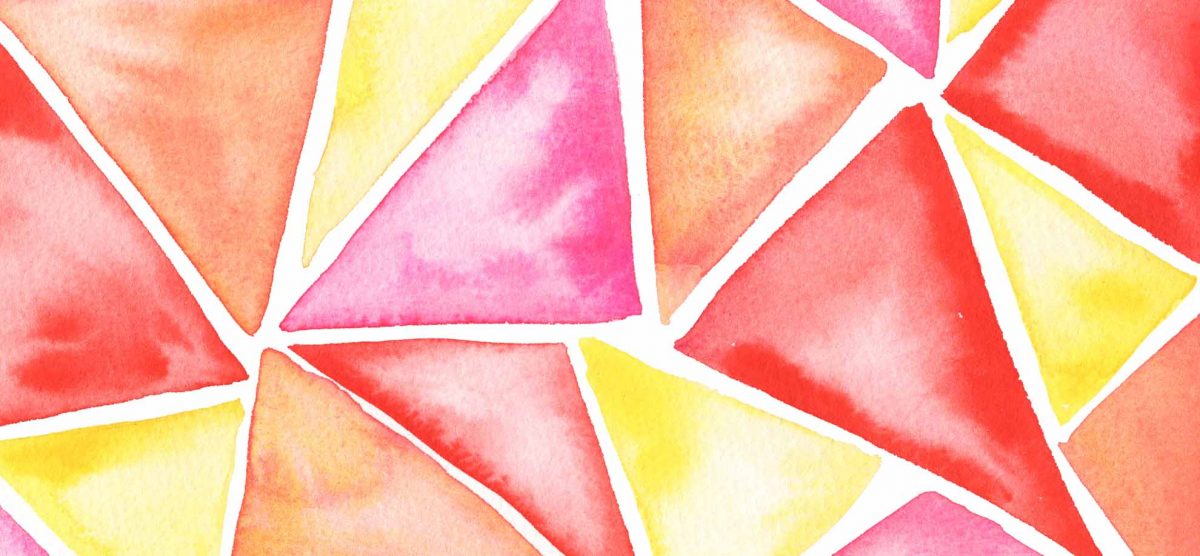Want to improve your watercolour painting? One of the most important things you can learn is about the different watercolour techniques you can use.
Watercolour can seem difficult to master because it works so differently from painting with oils or acrylics. In watercolour, you work from light to dark and use the water to change colours and make them lighter. It can seem backwards for people used to painting with other mediums!
But there are so many fun and unique effects you can get with watercolour, as long as you know the best watercolour techniques. This list covers everything from the basics for beginners to advanced and experimental techniques to boost your creativity.
Watercolour washes
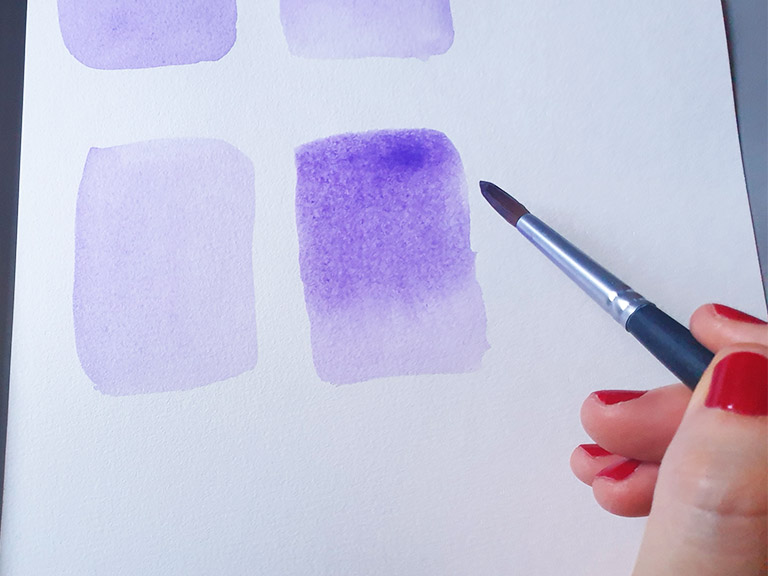
Watercolour washes are a simple technique in watercolour painting that provide a smooth, even layer of colour over a large area.
There are two main types of washes in watercolour painting: flat washes and graduated washes.
Flat wash
A flat watercolour wash is a single, uniform layer of colour that covers a large area of the paper. It’s achieved by mixing the watercolour paint with water to create a thin, transparent mixture that is then applied evenly to the surface of the paper.
Graduated wash
A graduated wash, on the other hand, is a wash that gradually transitions in a gradient. It can run from one colour to another, or from dark to light. Graduated washes are achieved by blending in a gradual, sweeping motion.
Read my full guide to creating watercolour washes with ease.
Wet on dry watercolour technique
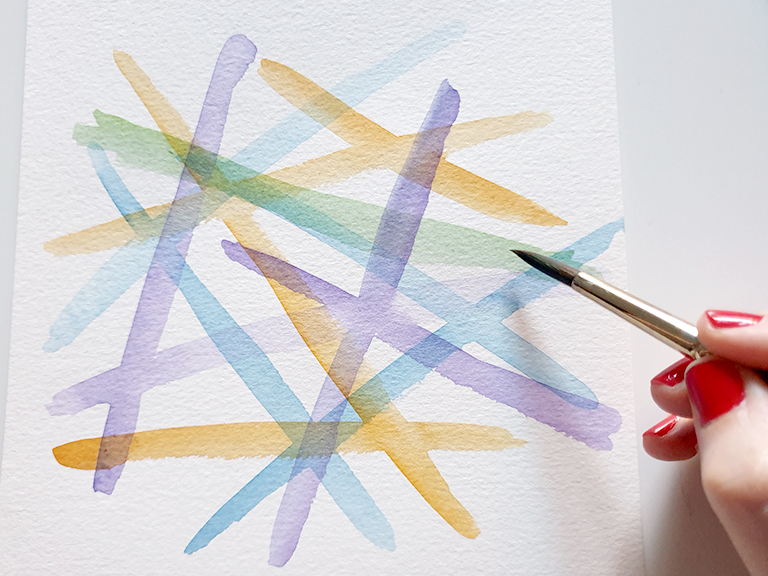
This is the simplest of watercolour techniques, involving adding more paint as the previous layers dry. There are various ways to use this technique:
Layering
The layering technique involves breaking a painting down into layers to build up the colour. In watercolour, we start with the lightest colour and layer darker colours over the top.
Details
You can also use wet on dry painting to go back over a painting once the first layers are dry and add finer details and textures.
Read my full guide to using wet on dry technique for more examples and projects to try!
Glazing
Glazing involves layering transparent colours over the top of each other, so you can still see the paint underneath. It creates colour mixes where the different paints overlap.
Read my guide to glazing in watercolour for projects and ideas including birthday balloons!
Wet on wet watercolour technique
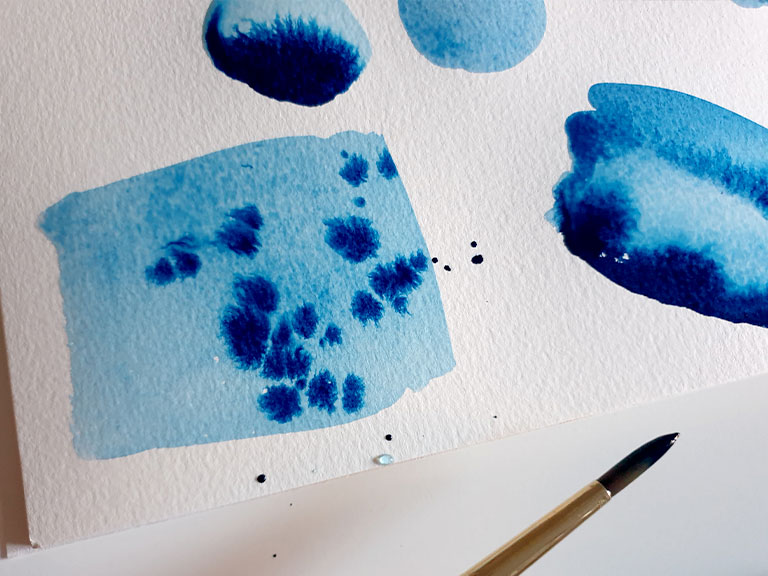
This watercolour technique is really unique to the medium. It involves adding more paint into areas that are already wet, creating stunning effects as the paints bleed and blend on the paper.
There are several ways you can use wet on wet effects:
Touch
The touch technique involves allowing two areas of wet paint to touch together, allowing the paints to bleed between them.
Drop in
This technique is when you use your brush to essentially ‘poke’ more paint into an area that’s still wet. Load up with a darker tone or a different colour and touch your brush to other wet paint and watch it bleed out!
Paper soak
This is similar but you wet your paper with just water, and then add the paint. It will spread and dry beautifully.
Blooms and flooding
This more advanced technique involves adding more water to paint that’s starting to dry, creating blooms – they’re sometimes called cauliflowers and look like white patterns in the more dry paint.
Read my in-depth guide to wet on wet effect for more examples and tips to use this magical watercolour technique.
Watercolour gradients
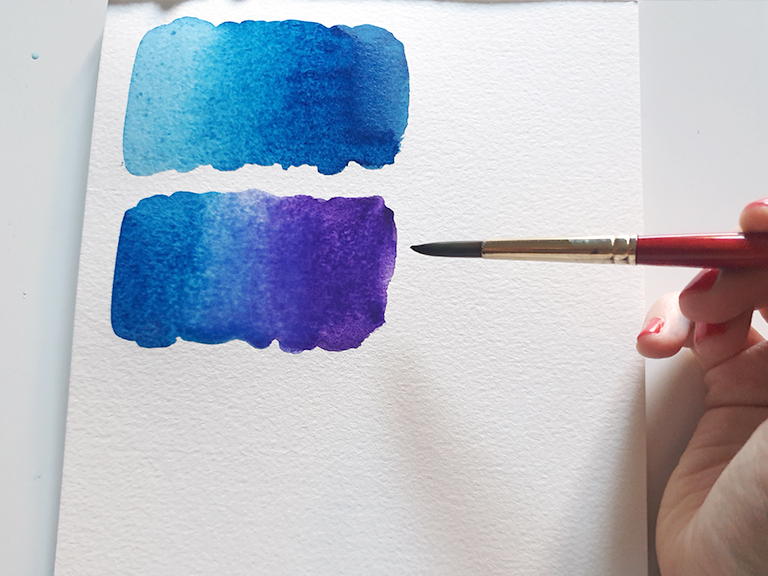
Gradients create a colour transition. There are two types – single colour and multi-colour.
Single colour gradients
A single colour gradient goes from darker to lighter and involves blending the watercolour to ensure a smooth transition.
Multi-colour gradients
These go from one colour to another with a smooth transition in the middle where the colours mix. You can then transition to even more colours as you go.
Read my detailed guide to watercolour gradients for my tips to create a seamless transition, including beautiful sunset projects.
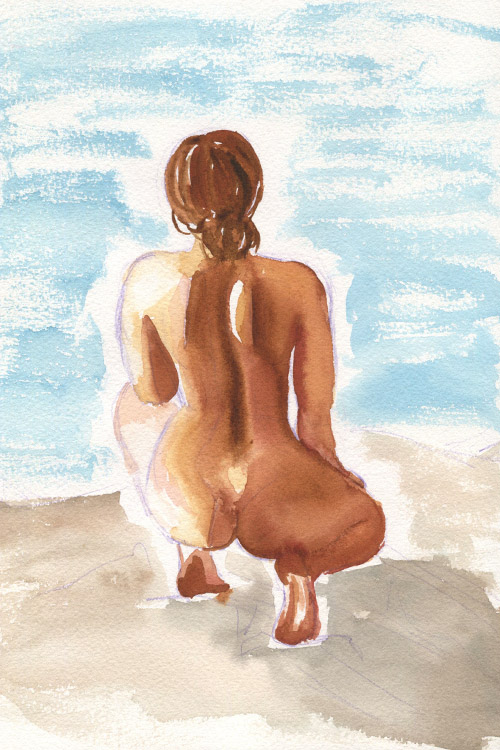
Dry brush effect
Watercolour is the perfect medium for creating texture with a dry brush. For this technique, you’ll need to use a dragging motion and a dry brush for waves, rocks, natural textures and visual interest.
Read my guide to creating the dry brush technique in watercolour.
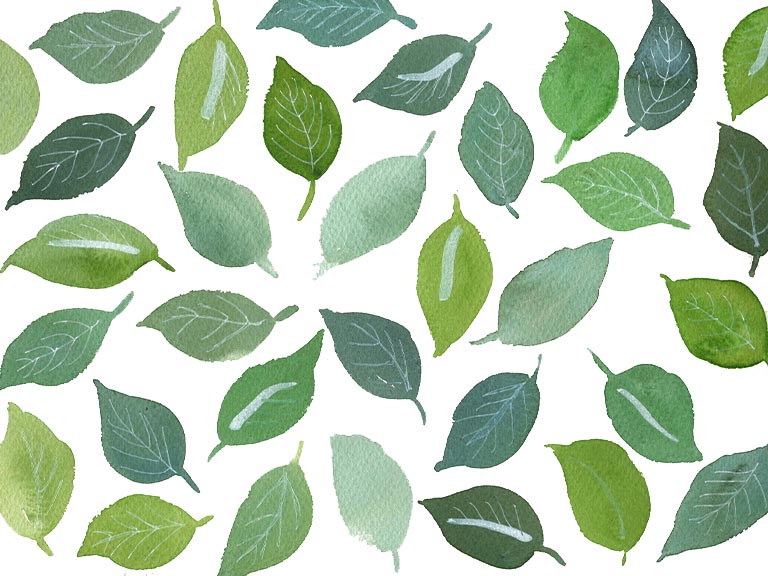
Creating white in watercolour
We don’t use a white paint in watercolour, so there are a few different ways to have white highlights in your finished piece.
White space
Leaving paper blank, with no paint on it, is the most common way to create white areas and highlights. Simply paint around your highlights as you go!
White gel pen
You can use a gel pen to add fine highlights over the top of dried paint.
White gouache or acrylic
A thicker medium like gouache can be painted over dry watercolours for a strong highlight. It can have a slightly chalky look but it’s great if you struggle with white space.
Read more ideas for creating whites in watercolour.
Using splatter effects in watercolour
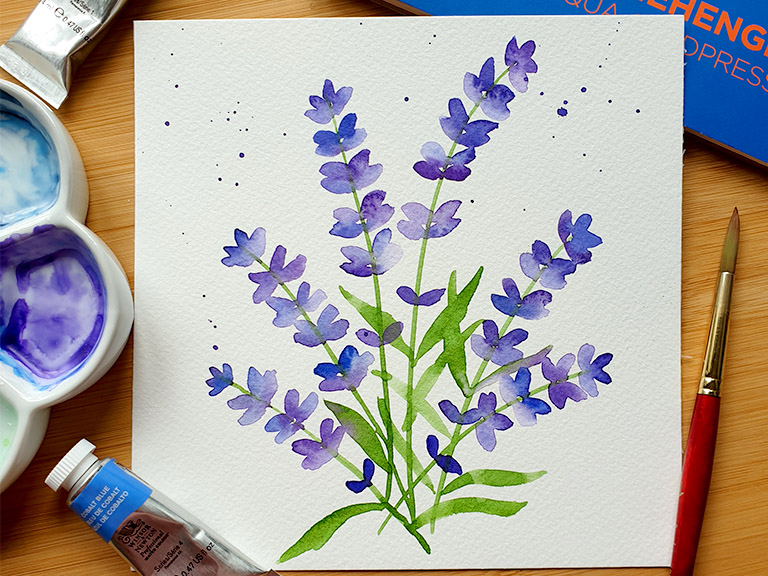
Splatter effect is made by flicking or tapping your brush to create texture across your paper. Used correctly, the paint splatter technique can help fill gaps and give a ‘painterly’ style. Go too hard and it will look like you’ve spilled paint over your work and ruined it!
Read my guide to splatter in watercolour for tips.
Using masking fluid – creative watercolour techniques
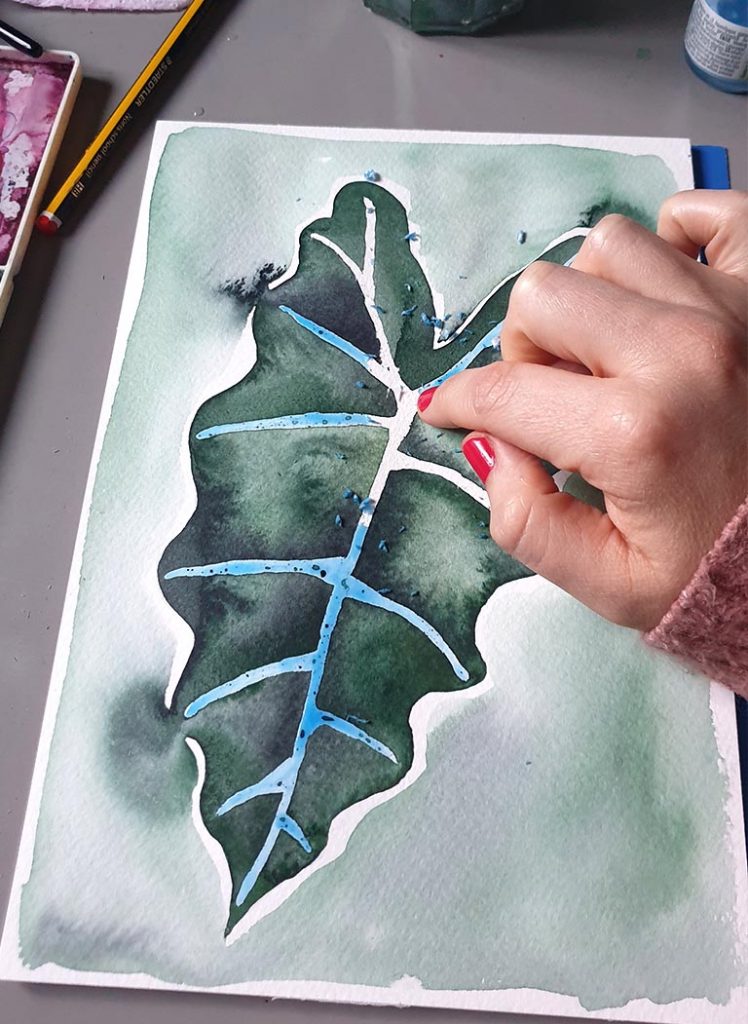
Masking fluid is a favourite creative watercolour technique! It’s a type of liquid latex that you can use to shield off areas of your paper while you paint, peeling it back later to reveal the untouched white paper.
Read more about masking fluid and ideas to use it creatively!
Granulation in watercolour
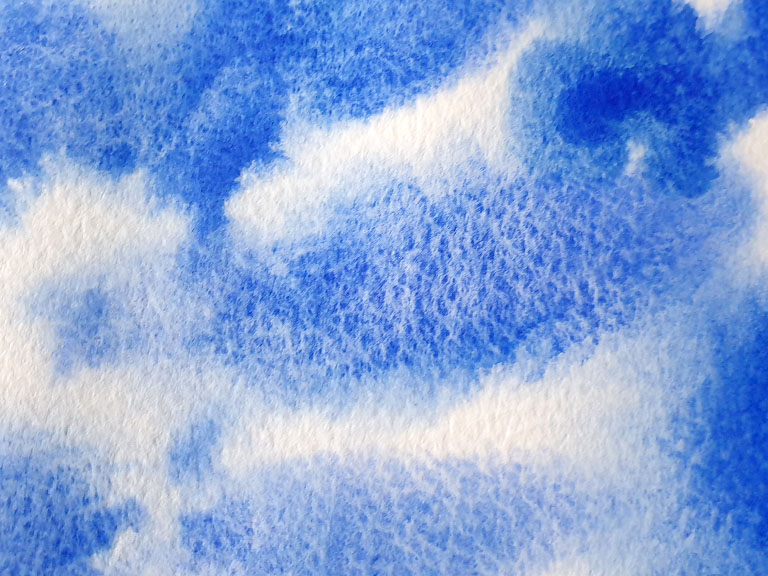
Have you ever seen someone raving about a watercolour paint that granulates and wondered what it means? Or maybe you started painting and found your paint to be mottled and textured on the paper?
Granulation in watercolour is a textured effect where the pigment particles clump together, settling into the paper texture in an uneven pattern. It’s more common with some paints than others, and can be enhanced with granulation medium. Granulating paints create wonderful creative effects – I love them in skies and abstract pieces.
Read more about granulation in watercolour.
Even more watercolour techniques?
This is my list of all the watercolour techniques you can try. Think I’ve missed any? Send me an email and I’ll add them in!
Download my free watercolour supply guide
Feeling overwhelmed and confused by watercolour paints, papers and brushes? Download my free guide filled with insider info, including a list of good supplies for every budget, and my complete supply list!
